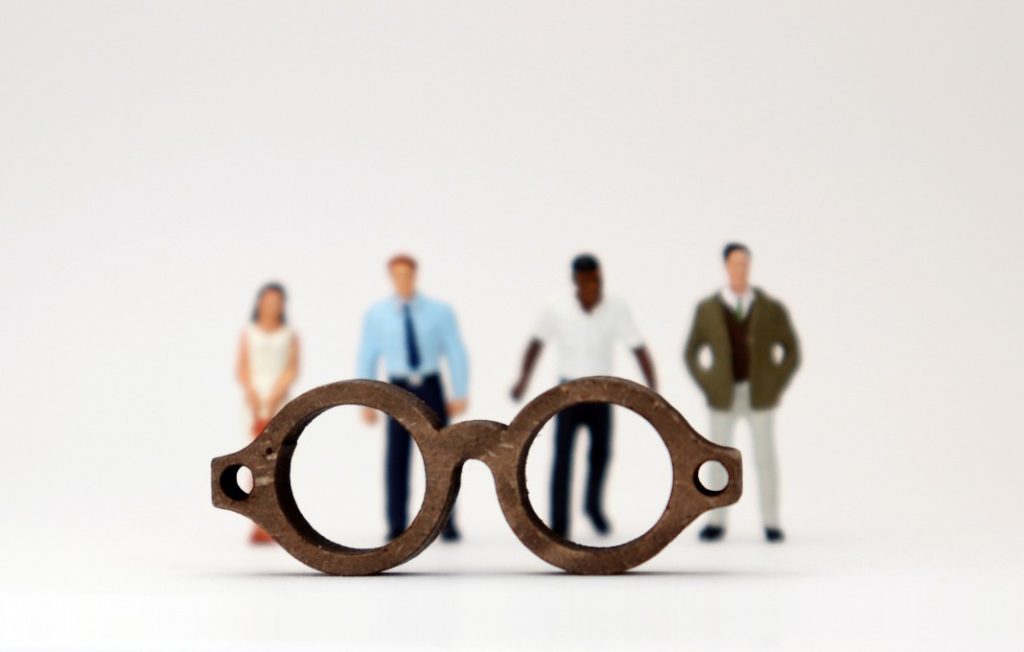 What do you do when you meet someone new virtually or in person? If you can see them, you may immediately start to size them up and figure out where they “fit in” based on their appearance. We do this automatically because it provides a level of comfort in dealing with the new person, but it is “shoal waters,” as we say in the Navy.
What do you do when you meet someone new virtually or in person? If you can see them, you may immediately start to size them up and figure out where they “fit in” based on their appearance. We do this automatically because it provides a level of comfort in dealing with the new person, but it is “shoal waters,” as we say in the Navy.
The problem with “auto-binning” is that it can completely miss the mark. Our opinion is formed by stereotypes and unconscious biases built up over a lifetime. Once we “bin” the person, we have limited possibilities about what they can contribute to the relationship, the team or the organization. We may also inaccurately attribute qualities to them that they do not actually possess, especially if they are slick talker.
We need to fight against the instinct to bin people and recognize that our unconscious biases creep in. Our biases can adversely affect the relationship with that person, tasks they are assigned, and how we perceive their work or their potential. Unconscious biases can be very detrimental in the workplace and are rarely rooted in facts. As leaders and mentors, we must recognize that we all have unconscious biases and take active measures to overcome them.
Increased diversity and getting to know people at a personal level helps to overcome unconscious biases. Make an effort to be inclusive of those who represent different races, genders, orientations, ages, abilities, and diversity of thought. The best solutions come from a diverse group which has fresh perspectives that can be shared and thoughtfully considered and debated.
When someone is considered in a “diversity” category, they may be pressured to “represent” that category and speak for the whole group, and may feel uncomfortable or unprepared for that. This is likely to happen more often as they advance in an organization and become more visible. Help them find ways to “speak to the skin they are in.” By that I mean talk about their personal experiences, what they have learned and how they can help others understand things from their perspective. This will help others understand their perspectives, where they have shared values and to overcome unconscious biases that are inaccurate.
Create space for people to discuss the challenges they face and the added pressure they may feel. Allow members on your team to share a few key talking points or perspectives with personal experience to back it up. It is important that everyone’s voice is heard, that everyone can have a seat at the table to listen and be listened to, and to not make the same stereotyped assumptions of others that may have been made about them. By sharing who they are and having open conversations, biases can be overcome and removed as factors negatively influencing the team, decision making and successful mission accomplishment.
Even in groups which may appear at first to be diverse there could be biases built up. Group leaders should start their work with a discussion about their assumptions and why they believe those to be valid or debunked.
One on one, leaders should keep an open mind and practice the “Sign of the Wolf” method: ears open, mouth closed. Do more listening than talking. Start with the premise that you do not know what the other person is going to say, but you will be listening and trying to understand their intent and purpose. If you start to hear things that don’t align with what you think, don’t interrupt. Let them finish out their thoughts then ask specific questions to dig deeper. Be open to the fact that you may have had it wrong. If you did not understand what they were communicating at first, engage in dialog, and truly listen—you will get to the heart of the matter and understand what shapes their perspectives.
Even in technology, biases can contribute to a false picture. In artificial intelligence and machine learning, algorithms developed by software engineers are affected by unconscious biases. Take for example the Turkish language translation that showed gender bias in AI. In Turkish, they use a common pronoun for the third person—male or female it doesn’t matter, it is the same pronoun. “John is a nurse” was translated from English to Turkish, then back to English, where it became “Joan is a nurse.”
Even with advanced technology to help management and decision making, we need to critically evaluate the information advanced systems provide us. Those systems were developed by humans and can have the same flaws as humans. The only way it will be resolved is through massive amounts of data that change the calculus of the results to overcome an individual bias. Societal bias will be more challenging because even with large amounts of data as those data could proliferate or reinforce the bias.
In the end, great leaders will recognize their own biases and help others recognize theirs. It is an iterative, ongoing process of our values and experiences continuing to influence and shape our thoughts. We must pause, make time and take action to overcome our unconscious biases.
